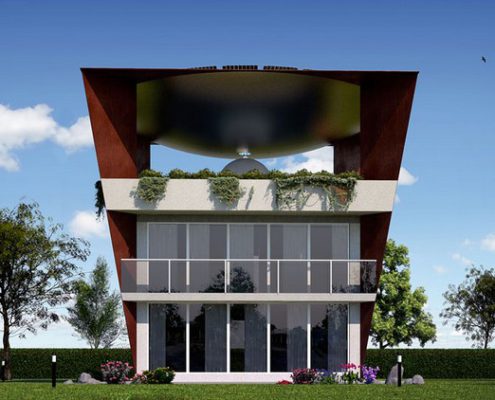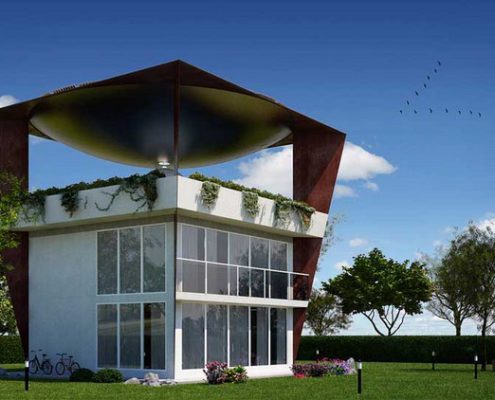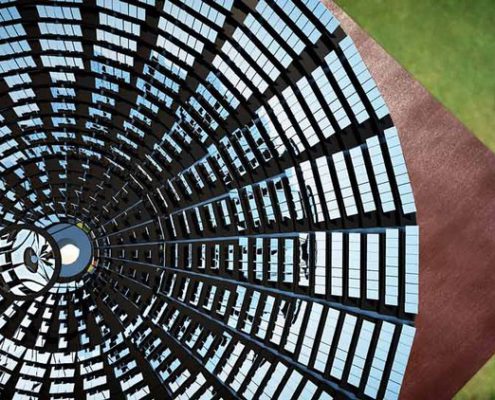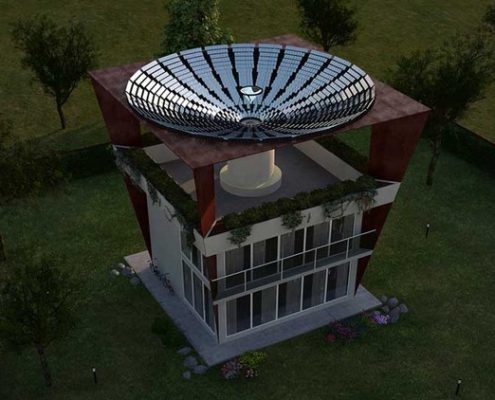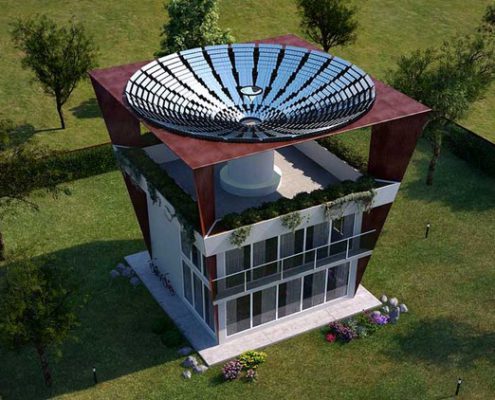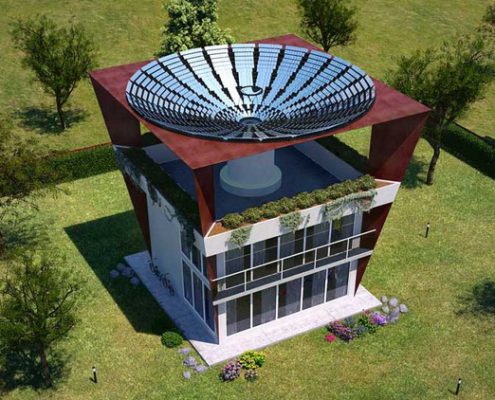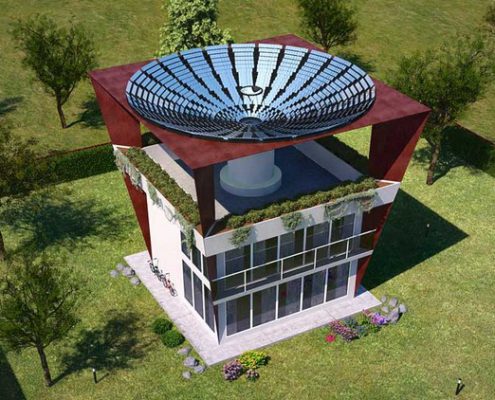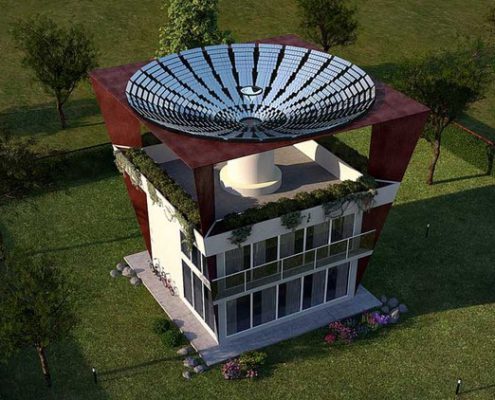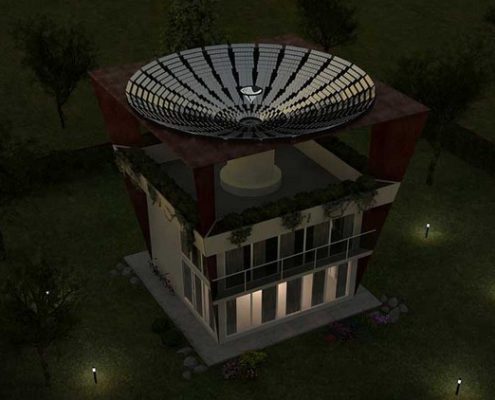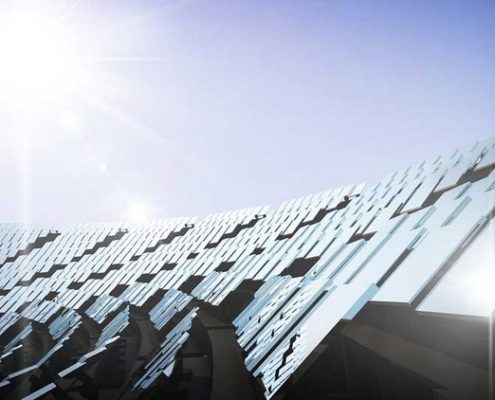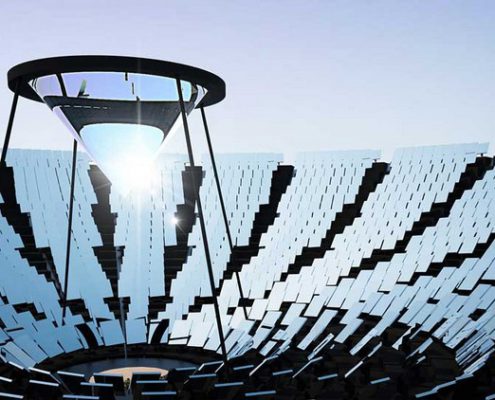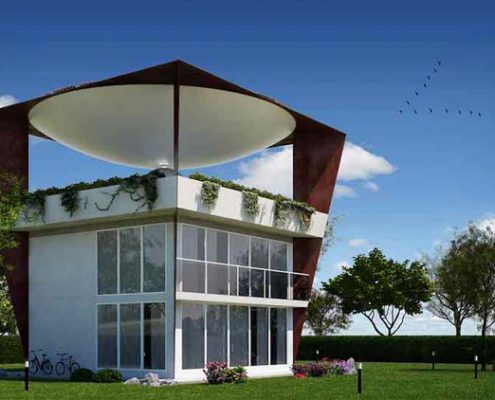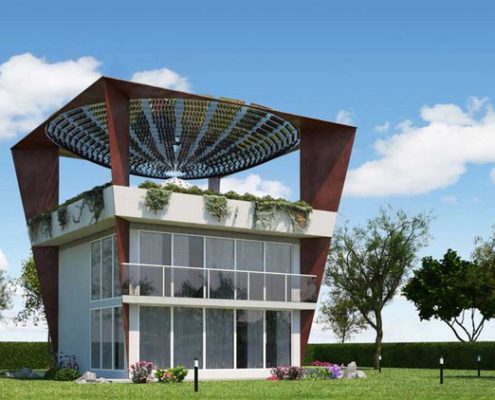Abitazione solare con eliostati
La copertura funziona come un ricevitore solare, disposti su una parabola ci sono dei piccoli specchi piani che convogliano la riflessione di energia solare verso un prisma e che a sua volta concentra l’energia verso un serbatoio che contiene il fluido da riscaldare.
Questi specchi, detti anche “eliostati”, sono comandati ed orientati sull’inseguimento solare, in modo da disporsi in modo ottimale ad usufruire della massima capacità captativa,che massimizza il trasferimento di calore dal sole al fluido termovettore contenuto all’interno del ricevitore.
Il fluido termovettore (HTF), che consiste di sale nitrato fuso, è riscaldato a temperature superiori a 600 ° C. Il HTC viene successivamente trasferita ad uno scambiatore di calore in cui l’acqua si trasforma in vapore che collega un generatore alla turbina.
La capacità termica più elevata del sale fuso, permette al sistema di conservare l’energia termica permettendo all’installazione di continuare a produrre energia anche quando il cielo è coperto e di notte.
L’accumulo termico incluso nel bulbo inferiore permette al sistema di continuare a produrre energia per ore dopo che il sole è tramontato. I componenti di produzione di energia e trasformazione sono nascosti all’interno dell’elemento posto sul piano terrazzo.
La dimensione della parabola con un diametro di ml 6,00, la superficie degli specchi eliostati pari ad una superficie di mq 45,00 totale,ma effettiva di irradiazione a 30mq (perche’ la parabola punta allo zenit),concentrerebbe 30 kw di luce e sarebbe capace di produrre energia elettrica pari a circa 7kw*6 ore= 42kw
House with solar heliostats
The cover functions as a solar receiver, arranged on a parabola there are small flat mirrors that convey the reflection of solar energy towards a prism and which in turn concentrates the energy to a reservoir containing the fluid to be heated.
These mirrors, also known as ‘heliostat’, are controlled and oriented on tracking solar, so as to be arranged in an optimal way to take advantage of the maximum capacity captativa, that maximizes the transfer of heat from the sun to the heat transfer fluid contained within the receiver.
The heat transfer fluid (HTF), which consists of molten nitrate salt, is heated to temperatures above 600 ° C. The HTC is subsequently transferred to a heat exchanger in which the water is transformed into steam which connects a generator to the turbine.
The higher heat capacity of the molten salt, allows the system to store the thermal energy enabling installation to continue to produce energy even when the sky is overcast and night.
Thermal storage included in the bottom bulb allows the system to continue producing energy for hours after the sun has set. The components of energy production and transformation are hidden inside the element placed on the plane terrace.
The size of the dish with a diameter of 6.00 ml, the surface of the mirrors heliostats equal to an area of 45.00 square meters total, but actual irradiation to 30sqm (because ‘the parable points to the zenith), concentrate 30 kw light and it would be able to produce electricity approximately 7kw * 6 hours = 42kw

